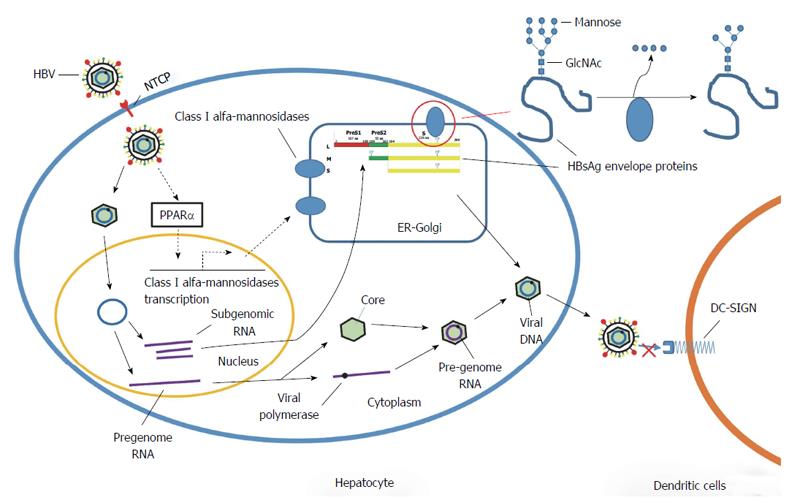Copyright
©The Author(s) 2016.
World J Gastroenterol. Nov 21, 2016; 22(43): 9534-9543
Published online Nov 21, 2016. doi: 10.3748/wjg.v22.i43.9534
Published online Nov 21, 2016. doi: 10.3748/wjg.v22.i43.9534
Figure 5 Overall mechanisms of hepatitis B virus escape from host-related immunity with a focus on the role of class I alfa-mannosidases via the PPAR-alfa pathway.
Hepatitis B virus infection increases the expression of class I alfa-mannosidases via the PPARα signaling pathway. The surface of HBV envelope proteins could be glycosylated by the class I alfa-mannosidases. In turn, DC-SIGN can no longer recognize the HBV glycoprotein coat, allowing the virus to escape from immune attack. NTCP: Sodium taurocholate cotransporting polypeptide; ER-Golgi: Endoplasmic reticulum and/or Golgi; GlcNAc: N-acetyl-d-glucosamine.
- Citation: Hu S, Jiang LB, Zou XJ, Yi W, Tian DY. Hepatitis B virus upregulates host expression of α-1,2-mannosidases via the PPARα pathway. World J Gastroenterol 2016; 22(43): 9534-9543
- URL: https://www.wjgnet.com/1007-9327/full/v22/i43/9534.htm
- DOI: https://dx.doi.org/10.3748/wjg.v22.i43.9534









